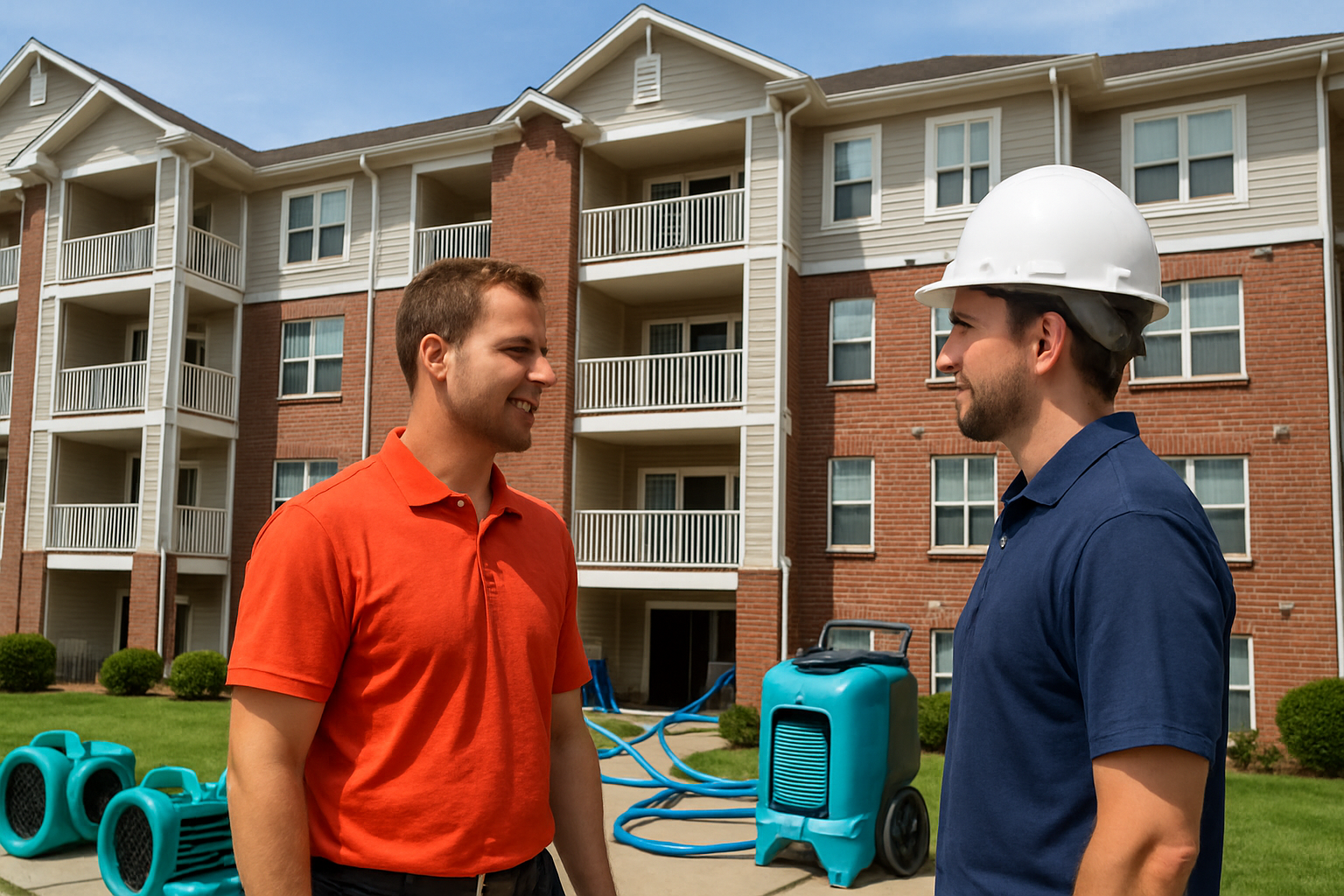What Business Owners Need to Know About Disaster Restoration for Multi-Tenant Buildings

What Business Owners Need to Know About Disaster Restoration for Multi-Tenant Buildings
Meta Title:What Business Owners Need to Know About Disaster Restoration for Multi-Tenant Buildings
Meta Description:Learn how disaster restoration for multi-tenant buildings impacts safety, liability, and business continuity with expert strategies for owners.
URL Slug:what-business-owners-need-to-know-about-disaster-restoration-for-multi-tenant-buildings
Introduction
Managing a multi-tenant property comes with unique responsibilities, especially when disaster strikes. Water damage, fires, storms, and mold outbreaks can impact multiple units at once, creating complex restoration challenges. Business owners and property managers must understand not only how restoration works but also the legal, financial, and tenant-related implications that accompany it.
This guide explains what every owner needs to know aboutdisaster restoration for multi-tenant buildings, including how to minimize disruption, ensure tenant safety, and protect property value.
TLDR – Quick Guide
- Multi-tenant buildings facecomplex restoration logisticsdue to multiple occupants.
- Clear communicationwith tenants and insurers is critical.
- Shared infrastructure(plumbing, HVAC, electrical) means damage spreads faster.
- Legal and liability risksincrease if restoration is delayed.
- Working with aspecialized disaster restoration teamensures compliance and efficiency.
Key Challenges in Multi-Tenant Disaster Restoration
1. Coordinating Multiple Tenants
Unlike single-family properties, multi-tenant buildings involve multiple households or businesses. Restoration teams must work around varied schedules, privacy needs, and safety concerns. This makes communication and planning essential to reduce frustration and liability.
2. Shared Infrastructure Issues
Plumbing, electrical, and HVAC systems are interconnected across units. A single burst pipe or electrical fire may affect multiple tenants simultaneously. Owners need restoration experts who can diagnose and repair building-wide damage quickly.
3. Insurance and Liability Concerns
Insurance coverage becomes more complicated in multi-tenant scenarios. Owners must clarify what falls under building insurance versus tenant renters’ policies. Delays in restoration can increase liability exposure for owners if tenants lose income or face health risks.
4. Business Continuity and Reputation
For commercial multi-tenant properties, downtime can mean tenants losing revenue. Residential tenants may also seek compensation or relocation if units remain uninhabitable. Acting swiftly with a professional restoration plan helps preserve trust and long-term tenant relationships.
5. Regulatory and Safety Requirements
Restoration must comply with building codes, health standards, and sometimes local government inspections. Mold remediation, asbestos removal, or fire restoration in particular require licensed professionals. Business owners should confirm their restoration partner has proper certifications.
Key Takeaways
- Disaster restoration in multi-tenant buildings ismore complexthan single-unit structures.
- Communication and coordinationwith tenants are vital to smooth restoration.
- Insurance clarityreduces disputes and financial risk.
- Timely actionpreserves business continuity and prevents legal complications.
- Always choose acertified restoration companywith multi-tenant experience.
FAQs
1. Why is disaster restoration more complicated for multi-tenant buildings?
Disaster restoration for multi-tenant buildings involves multiple parties, shared infrastructure, and diverse needs. Unlike single properties, one incident may affect dozens of tenants simultaneously. This complexity requires specialized coordination and expertise.
2. Who is responsible for covering the cost of disaster restoration?
Typically, the property owner is responsible for restoring the building’s structure and shared systems. Tenants may need to use their own insurance for personal belongings. Owners should consult legal and insurance professionals to clearly define responsibilities.
3. How can owners minimize disruption during restoration?
Owners should establish clear communication with tenants before and during the restoration process. Scheduling work in phases, providing updates, and offering temporary accommodations when necessary can reduce conflict. Partnering with an experienced restoration company helps ensure smoother operations.
4. What risks arise if restoration is delayed?
Delaying restoration increases the risk of secondary damage like mold growth, structural issues, or electrical hazards. It also heightens legal exposure if tenants face health risks or business losses. Prompt action protects both property value and tenant relationships.
5. What should business owners look for in a restoration company?
Choose a company with certifications in fire, water, and mold remediation, as well as experience in multi-tenant properties. The provider should have strong communication protocols and the ability to manage large-scale projects. Business owners should also confirm 24/7 availability for emergencies.
